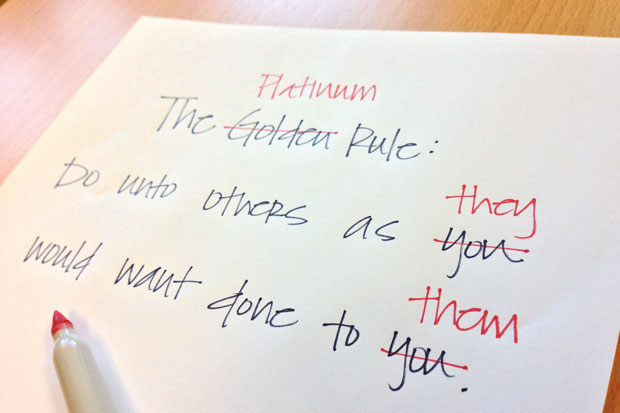 The Golden Rule or law of reciprocity is the principle of treating others as one would wish to be treated. It is a maxim of altruism seen in many religions and cultures. Simply stated, “One should treat others as one would like others to treat oneself.”
The Golden Rule or law of reciprocity is the principle of treating others as one would wish to be treated. It is a maxim of altruism seen in many religions and cultures. Simply stated, “One should treat others as one would like others to treat oneself.”
As a child, I learned it as “Do onto others as you would want them to do upon you.” (Matthew 7:12). But the Golden Rule has been around for a long time, found in the ancient writings of Egypt, China, India and around the world.
It is not a bad rule to live by… assuming that others want to treated like you like to be treated. It reminds me of an old joke: What did the sadist say to the masochist? No.
Different people have different preferences… and they may not be the same as yours. Hence the Platinum Rule, “Do onto others as they want to be done upon.” Or, simple put, “Treat others the way they want to be treated.”
The Golden Rule assumes that other people would like to be treated the way that we would like to be treated. The Platinum Rule accommodates the desires of others. This requires us to think beyond what we prefer and challenges us to understand the needs of other.
The Platinum Rule is the core principle of Human-Centered Design used to design experiences. And machine learning can help us with this. Machine learning is now everywhere – monitoring where we click, swipe, touch and even look (eye tracking).
Human interactions are fed as context to algorithms where the machines “learn” what we do – our actions reveal our desires. Feedback loops feed the algorithm with learning material that continuously optimize the experiences based on our changing reactions. Think about how Amazon or Netflix just get better at recommending things for you.
Machines are learning what you like, prefer and desire. Machine Learning is informing us how to create better experience with the Platinum Rule.